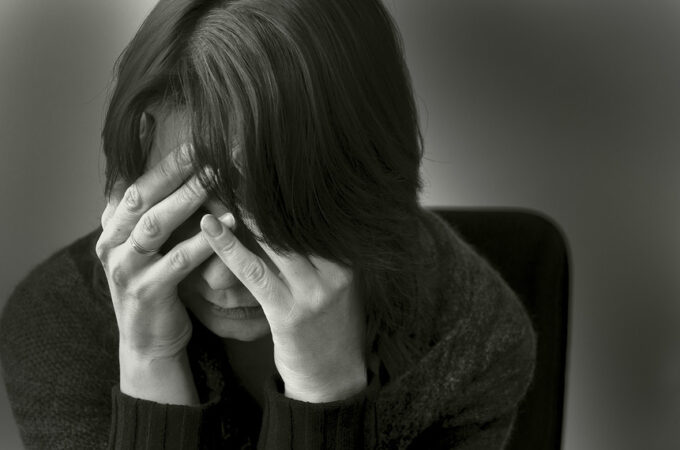
How to Disinfect Your Workplace in This Time of Pandemic
As states are beginning to lift restrictions and reopen, businesses are determining how to operate under the ‘new normal’, strict protocols of sanitation and cleanliness. In a recent survey of business owners and upper-level managers, SERVPRO reported 83 percent are investing more resources to clean their office spaces. What’s more, 46 percent plan to deep clean for as long as COVID-19 is a threat.
The novel coronavirus (COVID-19) can be transmitted between humans. Touching infected surfaces can pass the virus in the workplace. Bacteria and viruses can be found in hundreds or even thousands of microscopic hiding spots in offices such as in keyboard crevices, elevator buttons, doorknobs, paperwork, pens, and even the handles of communal devices including bags, kettles, cabinets, ovens, and refrigerators.
The Centers for Disease Control and Prevention (CDC) and the Occupational Safety & Health Administration (OSHA) provide tips to keep yourself healthy by proper ways to disinfect workplaces during the coronavirus pandemic.
This article summarizes four (4) tips about disinfecting your workplace during the pandemic.
1. Clean Your Workstation

It’s important to clean your workstation before you start your shift. By observing cleanliness in the workplace, you can eliminate the spread of the coronavirus.
Here are the key tips for disinfecting your work station the right way:
- You can use an EPA-approved cleaning product to disinfect your work phone, keyboard, desk, chair, monitor, computer mouse, headset, and any other surfaces or objects that you and your colleagues use.
- Wiping down objects and surfaces will require a lot of wipes. This is because the surface you disinfect should remain wet for about 3 to 5 minutes to be effective.
- For managers, it’s important to hire a professional to clean all surfaces in your workplace using soap and water and disinfect all areas as much as possible.
- Practice routine cleaning of high-touch surfaces including light switches, tables, doorknobs, countertops, phones, handles, desks, keyboards, faucets, toilets, sinks, etc. Check out the pricing for commercial disinfection for your office building.
- Practice regular and thorough handwashing. Wash your hands whenever you touch door handles after you eat or when you blow your nose.
- If soap is not available, sanitize using 70 percent alcohol or hand sanitizer. However, gels don’t clean as thoroughly as hand-washing with soap and water.
- Avoid unnecessary physical contact such as handshakes. You can do a friendly wave, thumbs-up, or peace sign instead.
2. Correct Disinfection Procedure

The primary objective of disinfecting your workplace is to kill germs such as the coronavirus on surfaces. While disinfectant chemicals or agents are stronger than soap, they don’t necessarily clean visible dirt or remove germs on surfaces. Disinfecting only kills germs to lower the risk of infection. If you’re hiring a Cleveland disinfection company or a disinfection company in another city, make sure to ask about their cleaning procedure to ensure it will kill all traces of COVID-19, as well as all other bad bacteria and viruses.
Proper disinfection requires that the disinfectant product used should remain on a surface for three (3) to five (5) minutes. If the surface is dirty, you have to clean the surface with soap and water or detergent. Complete the cleaning as necessary, and then apply the disinfectant. EPA-registered household disinfectants are highly recommended. Remember to always follow the manufacturer’s instructions by reading the label to ensure the effective and safe use of the product.
To prevent COVID-19 infection in the workplace, you can watch this video on how to properly disinfect your office.
Most disinfectant products include the following usage recommendations:
- Keep the surface wet with the disinfecting product for a specific period of time (read product label).
- When applying disinfectants, observe precautionary measures such as by wearing gloves and by ensuring good ventilation.
- Use a diluted household bleach solution if this is appropriate for the surface to be disinfected. Some bleaches, such as those designed for whitening or for safe use on colored clothing, may not be applicable for disinfection.
- Check the expiration date. Unexpired household bleach is effective against the coronavirus when properly diluted.
- Do not mix ammonia and household bleach.
3. Disinfecting Electronics

Proper disinfection is necessary for all electronic equipment. Cell phones, tablets, keyboards, touch screens, remote controls, and ATM machines should be disinfected. Put wipeable covers on electronics. You can use alcohol-based sprays or wipes containing at least 70 percent alcohol and dry surfaces thoroughly.
4. If Someone Gets Sick
Cleaning and disinfecting the building thoroughly is a must. Make sure to close off all areas used by the sick employee. Open outside windows, doors, and vents to increase air circulation. Wait for at least 24 hours before cleaning and disinfecting the area.
Here are additional recommendations from the CDC and OSHA:
- Clean and disinfect all areas used by the sick person. This includes offices, common areas, bathrooms, and all ventilators, fans, and air-conditioning vents. Clean and disinfect all shared electronic equipment such as tablets, keyboards, touch screens, ATM machines, and remote controls.
- Wear disposable gowns and gloves for all tasks during the cleaning process, even when handling trash.
- Extra personal protective equipment (PPE) is required depending on the cleaning or disinfectant products being used.
- Gowns and gloves should be removed carefully. It will avoid contamination of the surrounding area and the wearer.
- Educate all employees or workers who are tasked to do the cleaning, trash pick-up, and disinfecting to recognize the signs and symptoms of coronavirus infection. Provide instructions and guidelines on what to do if ever they develop symptoms of COVID-19 within 14 days.
Takeaways
Cleaning and disinfecting procedures can vary from one workplace to another, depending on the type of surfaces involved and whether someone got exposed to the virus or not. These processes require a collaborative effort from the employees, management, and support staff. Training when to use PPE is highly recommended to ensure that workers are trained in handling cleaning chemicals or disinfectants used in the workplace.




